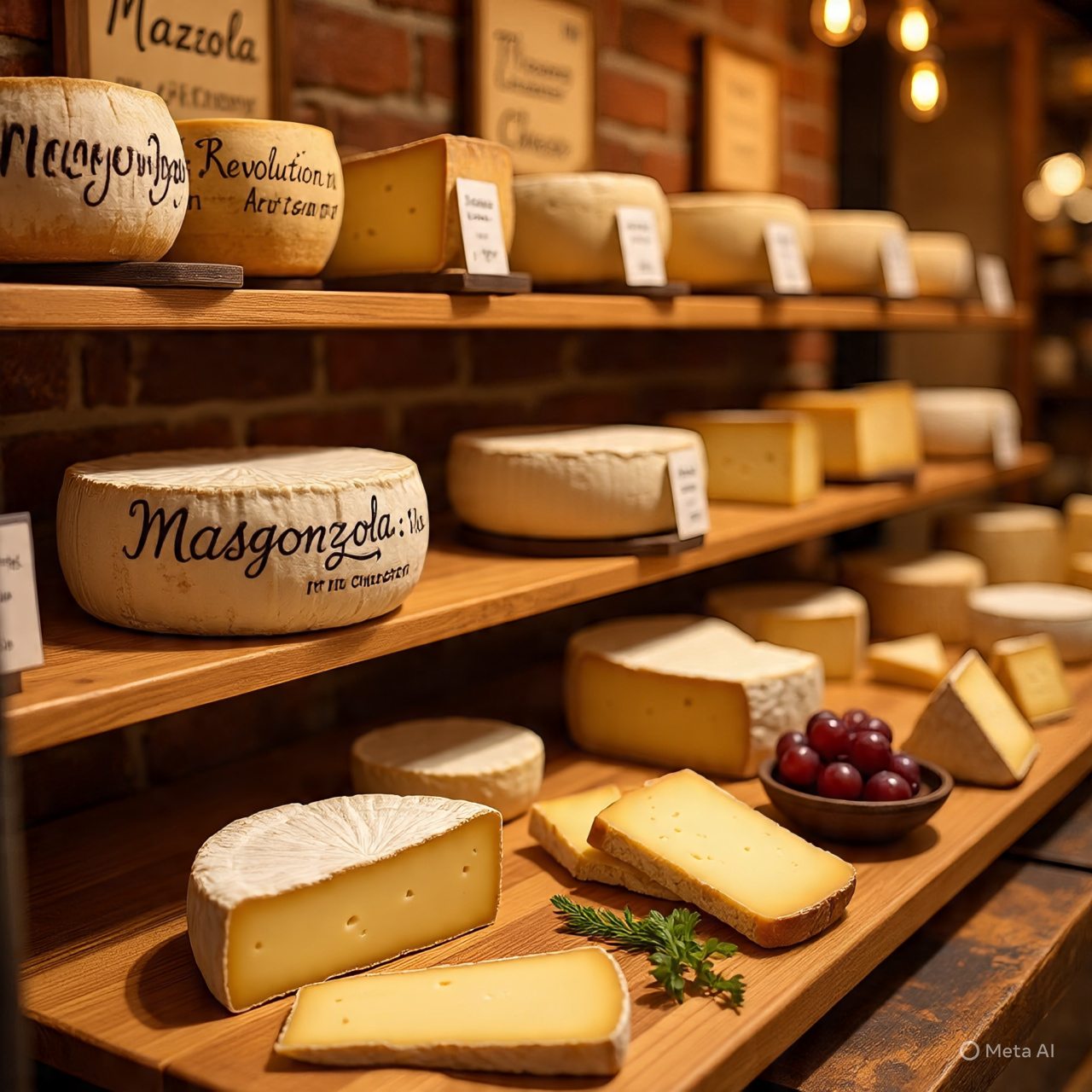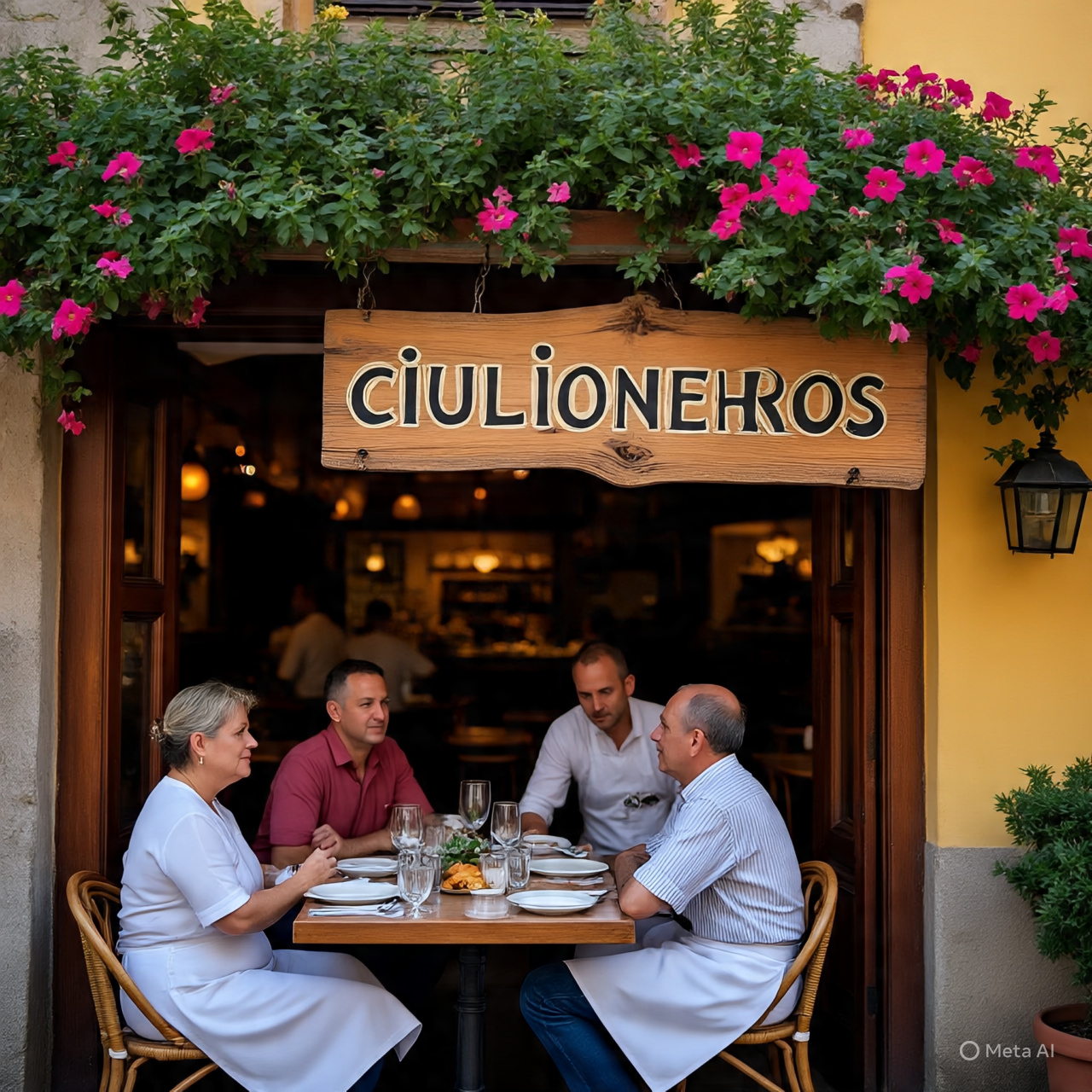Imagine a cheese that unites the decadent creaminess of mascarpone with the bold, blue-veined personality of gorgonzola. That is the magic of Masgonzola—a relatively recent culinary innovation that has already earned a reputation among food critics, gourmet enthusiasts, and fine-dining chefs. It’s more than just a cheese—it’s a statement, a fusion, and an entirely new experience.
Born from the fertile dairy traditions of Northern Italy, Masgonzola embodies the synergy of contrasting textures and flavors. It harmonizes richness with sharpness, sweetness with spice, and elegance with earthiness. This dual-natured cheese is not only changing palates but also redefining what is possible in the world of dairy craftsmanship.
In this in-depth article, we’ll explore the origins, composition, culinary versatility, nutritional profile, pairing suggestions, and cultural impact of Masgonzola. Whether you’re a cheese aficionado or a curious newcomer, this guide will give you everything you need to know about this creamy revolution.
Origins: The Meeting of Two Worlds
Italy is a country with an unparalleled cheese-making heritage, boasting over 400 recognized varieties. Mascarpone, with its sweet, buttery, velvety profile, has long been the heart of indulgent desserts like tiramisu. Gorgonzola, on the other hand, is a bold blue cheese known for its aged tang and deep, moldy bite.
Masgonzola was born from a desire to create a cheese that retains the best qualities of both:
- From mascarpone, it inherits the smoothness and creamy consistency.
- From gorgonzola, it adopts the aromatic blue veins and assertive, earthy taste.
Some historians trace the invention of Masgonzola to artisanal cheese producers in Lombardy, where both parent cheeses originate. Early versions were likely accidental blends, but intentional refinement has now made it a specialty item in gourmet markets and high-end restaurants.
How It’s Made: A Blend of Art and Science
Creating Masgonzola requires precision and patience. Unlike traditional cheeses that rely on a single fermentation style, Masgonzola production involves dual processes:
1. Base Composition
The base is a high-fat cream blend similar to mascarpone, using cow’s milk with a butterfat content often exceeding 70%. This imparts a rich mouthfeel and a silky body.
2. Blue Vein Culturing
Before setting, blue mold cultures like Penicillium roqueforti are added, initiating the same enzymatic processes found in gorgonzola. These mold spores form the characteristic veins during aging.
3. Aging Process
Masgonzola is aged for around 4 to 8 weeks, shorter than traditional gorgonzola but long enough for the blue veins to develop without overwhelming the delicate creamy base.
4. Marbling Effect
Its stunning marbled appearance is achieved by lightly stirring the curds during maturation, allowing blue cultures to spread unevenly throughout the cheese, creating visual contrast and depth of flavor.
Flavor Profile: A Symphony of Contrasts
The flavor of Masgonzola is truly unique. It’s often described as:
- Creamy yet tangy
- Sweet with spicy undertones
- Mild but complex
The first bite offers a mellow, buttery sensation. Then, the blue veins kick in, introducing sharpness and umami. The contrast is balanced so skillfully that neither flavor dominates. The finish is long and clean, leaving a gentle reminder of its gorgonzola heritage.
Texture
Masgonzola has a spreadable, whipped quality similar to cream cheese but with far more depth. It can be sliced when cold but softens quickly at room temperature, making it ideal for spreading on warm breads or crackers.
Culinary Applications: Endless Possibilities
Masgonzola’s adaptability in the kitchen is one of its strongest assets. Here are some creative ways to use it:
1. Appetizers
Spread it on crostini with honey and walnuts, or serve alongside fruit like pears or figs for an elegant starter.
2. Pasta and Risotto
Masgonzola melts beautifully, making it a rich addition to creamy pasta sauces and risottos. Combine with pancetta or wild mushrooms for a decadent main dish.
3. Gourmet Burgers
Add a spoonful atop a grilled patty for an upscale twist on cheeseburgers.
4. Dessert Experiments
While traditionally savory, some daring chefs are using Masgonzola in desserts—paired with dark chocolate or layered in cheesecakes for a savory-sweet balance.
5. Salads and Dressings
Whip into vinaigrettes or crumble onto mixed greens with roasted nuts and vinaigrette for a bold flavor boost.
Pairing Masgonzola: What to Drink and Eat with It
Masgonzola shines when properly paired. Here’s what goes well with its unique profile:
Wine Pairings:
- Sauternes or Late Harvest Riesling: Sweetness complements the tangy blue veins.
- Barolo or Chianti Classico: Earthy reds accentuate the richness.
- Champagne: Its bubbles cut through the creaminess for a cleansing finish.
Food Pairings:
- Cured meats like prosciutto or bresaola
- Fruits like apples, pears, figs, and grapes
- Artisan breads including sourdough, rye, or fig loaf
- Nuts, especially walnuts and pecans
Nutritional Benefits and Considerations
While indulgent, Masgonzola offers several nutritional benefits when consumed in moderation:
| Nutrient | Approximate (per 30g) |
|---|---|
| Calories | 120–140 kcal |
| Fat | 12g |
| Protein | 4g |
| Calcium | 10% RDA |
Benefits:
- High in calcium for bone health
- Contains probiotics from blue mold cultures
- Satiating due to its fat content
Considerations:
- High fat: Best enjoyed in moderation
- Lactose content: Lower than milk but may still affect sensitive individuals
Popularity and Cultural Impact
Masgonzola is no longer confined to cheese boutiques. It’s popping up on fine dining menus, featured in television cooking shows, and even gaining traction among home chefs on social media. Its photogenic marbling and unique flavor profile make it both an Instagram favorite and a critic’s darling.
In culinary schools, Masgonzola is studied as a model of fusion cheese craftsmanship. It represents how traditional ingredients can be reimagined without losing their cultural essence.
Where to Buy and How to Store
Buying Tips:
- Specialty Cheese Shops: These often carry the freshest versions.
- Online Gourmet Stores: Many deliver internationally.
- Farmers’ Markets: Look for local artisans experimenting with variations.
Storage Advice:
- Wrap in wax or parchment paper before sealing in a container.
- Store at 3–5°C (37–41°F) in the cheese drawer of your fridge.
- Consume within 10 days of opening for best quality.
The Future of Fusion Cheeses
Masgonzola has paved the way for a broader category of fusion cheeses that blend traditions, textures, and tastes. Chefs and artisans are increasingly exploring cross-style creations, mixing regional specialties with global influences. The success of Masgonzola shows there’s a growing appetite for innovation in the culinary world—especially when it respects its roots.
Frequently Asked Questions (FAQs)
Q1: What is Masgonzola cheese made of?
A: Masgonzola is made from high-fat cow’s milk cream (similar to mascarpone) and cultured with blue mold spores like Penicillium roqueforti, which give it the blue veining associated with gorgonzola.
Q2: Is Masgonzola a real cheese or just a blend?
A: It is a real cheese, crafted through a controlled process that marries the methods of making mascarpone and gorgonzola. It’s not a simple mix but a deliberately cultured and aged product.
Q3: Can I cook with Masgonzola?
A: Absolutely! It’s perfect for sauces, risottos, or simply melting onto warm dishes. Its creamy texture and rich flavor make it a favorite for culinary applications.
Q4: Is Masgonzola suitable for vegetarians?
A: This depends on the rennet used. Some artisanal versions use microbial or vegetable rennet, but others may use animal-based enzymes. Always check the label.
Q5: How does Masgonzola differ from gorgonzola dolce?
A: While both are creamy and veined, Masgonzola is softer and has a milder, sweeter base due to its mascarpone lineage. Gorgonzola dolce is firmer and tangier.
Q6: Can I freeze Masgonzola?
A: Freezing is not recommended, as it can compromise the texture. If you must freeze it, use it for cooking purposes afterward.
Q7: Is Masgonzola expensive?
A: As a specialty cheese, it can be pricier than standard supermarket options, usually ranging from $25–$40 per pound, depending on the source and age.
Final Thoughts
Masgonzola is more than just a delicious cheese—it’s a symbol of culinary creativity. By merging the best of mascarpone and gorgonzola, it creates a product that’s both comforting and exciting, familiar and new.
Whether you’re serving it at a holiday gathering, cooking up a show-stopping meal, or simply enjoying it with a glass of wine, Masgonzola invites you to explore the heights of gourmet indulgence.



